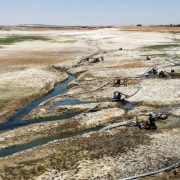Worksite safety has always been a top priority for any responsible organization. It not only ensures the well-being of employees but also enhances overall productivity.
While traditional safety measures have long been in place, modern times call for innovative solutions that redefine how we think about worksite safety. One such innovative approach is the implementation of a traffic guidance scheme.
Delve into how these schemes can play a pivotal role in enhancing worksite safety, focusing on their various aspects and benefits.
The Improved Visibility
One of the primary benefits of these schemes is the significant improvement in visibility. By strategically placing warning signs, reflective materials, and traffic cones, worksites become much more visible, reducing any risk of accidents due to poor visibility. This enhanced visibility ensures that workers and visitors can navigate the area safely, even in adverse weather conditions or low-light situations.
Additionally, implementing lighting solutions further enhances visibility during nighttime work, ensuring that worksites remain safe around the clock.
Efficient Traffic Flow
Traffic congestion at worksites causes delays and poses a significant safety hazard. A traffic guidance scheme helps optimize traffic flow by providing clear instructions to drivers and pedestrians. This includes designated lanes, detours, and speed limits, all contributing to a smoother and safer traffic flow.
Moreover, these schemes can incorporate smart technologies such as dynamic signage and real-time updates, allowing for quick adjustments in traffic management to address changing conditions, further enhancing efficiency and safety.
Improving Worker Protection

The well-being of workers should always be at the forefront of any safety initiative. These schemes excel by creating safe zones and designated pathways for employees to carry out their tasks without worrying about oncoming traffic. This segregation of work and traffic areas significantly reduces the risk of accidents and ensures workers can focus on their tasks without any unnecessary distractions.
Furthermore, using high-visibility personal protective equipment (PPE) for workers, in conjunction with the scheme, creates an additional layer of safety by making employees easily identifiable to all on the worksite.
Helping Enhance Communication
Effective communication is the backbone of worksite safety. Traffic Guidance helps promote clear and concise communication through standardized signage, signals, and alarms. This standardized approach ensures that everyone on the worksite understands and follows the same safety protocols, reducing the chances of misunderstandings and accidents.
Moreover, incorporating digital communication systems, such as two-way radios and mobile apps, can enhance real-time communication among team members and supervisors, allowing for swift response to emergencies and changing conditions.
The Data-Driven Safety
In the digital age, data is crucial in improving worksite safety. It can be integrated with data collection tools like cameras and sensors to monitor traffic patterns, worker movements, and potential safety hazards. This data-driven approach enables organizations to identify areas of improvement and implement preventive measures proactively.
By analyzing historical data, organizations can also predict potential safety issues and take preemptive actions, ultimately reducing the number of accidents and injuries on worksites.
Differences Between A Traffic Management Plan And A Traffic Guidance Scheme
Let’s get into a bit more detail! A traffic guidance scheme refers to a visual guide that shows critical site data and how to implement traffic control devices. Both of them help in changing the existing footpath and road conditions. A traffic maintenance scheme sets out emergency vehicles as well as public transport allowances.
Under it, other inclusions are signage requirements and traffic controller instructions. It is generally categorized as an A3 document which is quite clear to follow. On the other hand, a traffic management plan is somewhat different. It is mostly ideal if your project requires long-term traffic control.
A traffic management plan covers the overall scope of vehicles’ positioning, equipment, personnel location, etc. It also includes streamlined information about the TGS, indemnity insurance, and public liability. The traffic guidance plan is more detailed and has much more information on other aspects of job safety analysis.
Why Is Traffic Management Important?
Traffic management is not only about guiding someone about the right traffic path. It is also about complying with specific rules around traffic signage and how to place each sign. Consequently, it is critical to list down a traffic guidance scheme. They are designed to cooperate with a risk assessment plan.
It Reduces Congestion
With efficient traffic management plans, one can reduce congestion even when there are crowded areas. This makes intersections and roads all the more efficient. The use of road traffic signals and road improvements helps to maintain traffic flow and reduce gridlock.
Enhances Safety
Again, traffic management is helpful for improving security on the roads. By enhancing the traffic flow, it might help to reduce the possibility of accidents. Signals in traffic might help ensure that pedestrians and drivers know their surroundings well.
Decrease Delays
Thirdly, traffic management plans also help to lower the delays mostly due to traffic congestion. Ensuring that there’s a smooth traffic flow reduces the amount of time individuals have to wait for the traffic to clear. And what’s better than reaching workplaces and our houses on time?
Boosts The Economy
Finally, traffic management plans are also effective when it comes to enhancing the economy of a certain area. Not only does it improve the traffic conditions of a place, but it also reduces the amount of resources like money and time spent on congestion.
Conclusion
A traffic guidance scheme has redefined worksite safety by addressing various aspects, from visibility enhancement and efficient traffic flow to worker protection and data-driven safety measures. These schemes minimize the risk of accidents and improve overall productivity by ensuring that worksites operate smoothly and safely.
As organizations continue to prioritize the safety and well-being of their employees, adopting these schemes is a logical step forward. By doing so, they meet their moral and legal obligations and contribute to a more efficient and secure working environment. Worksite safety needs innovative solutions, and these guidance schemes are leading the way toward a safer and more productive future.
Read Also:
















